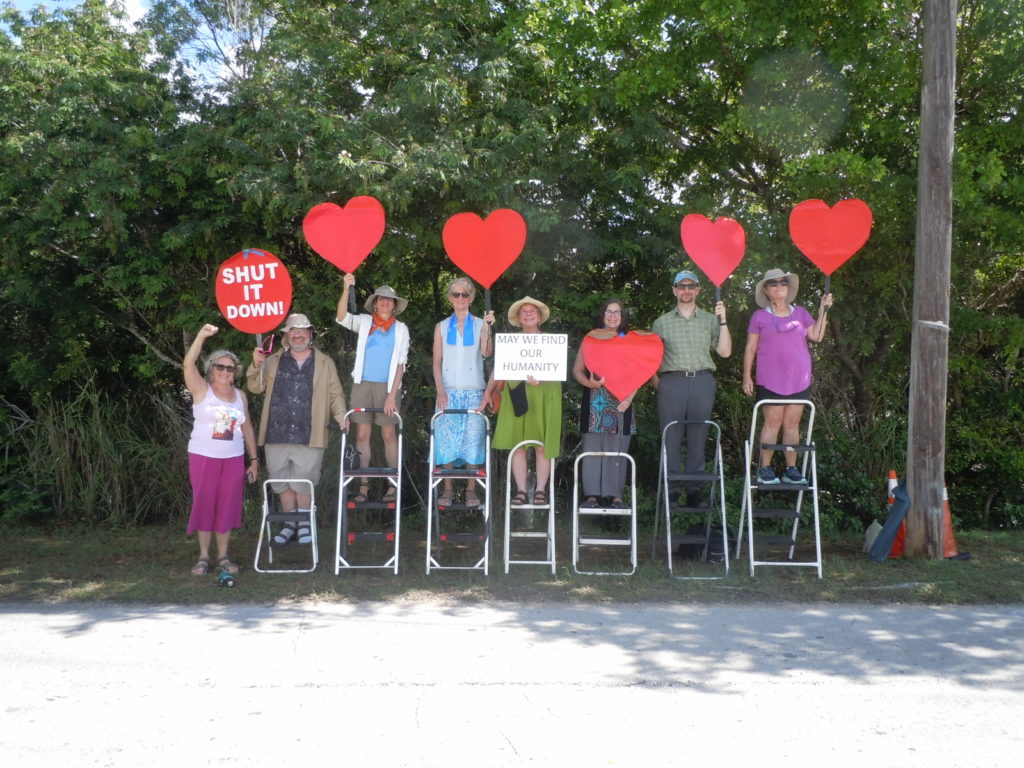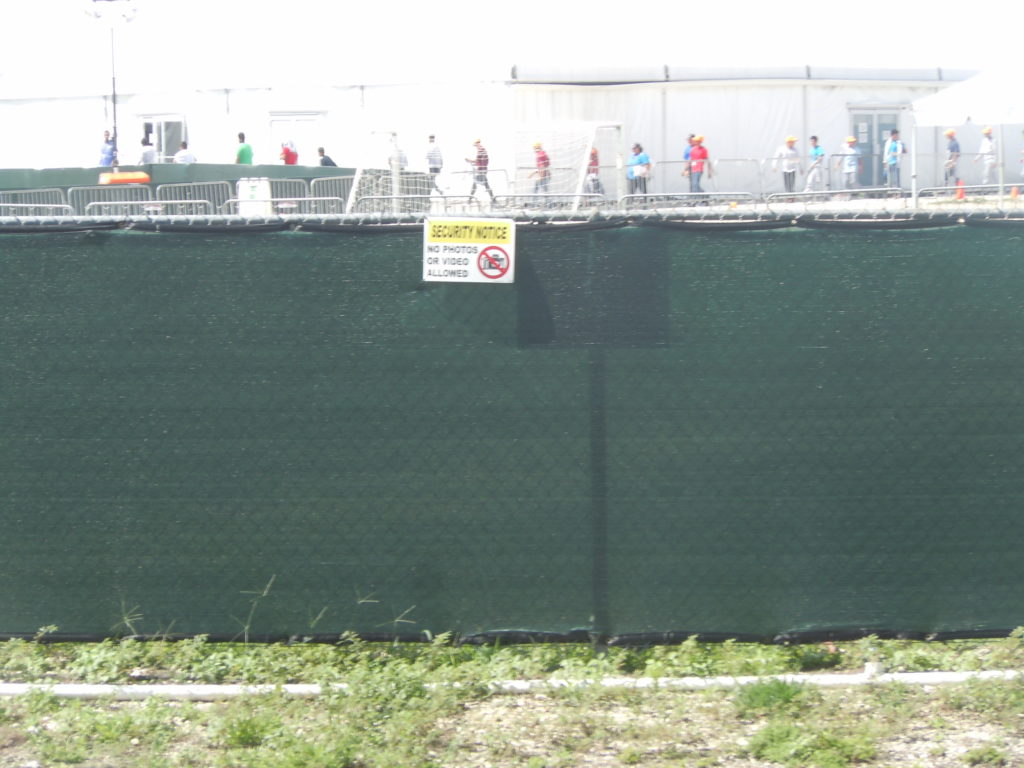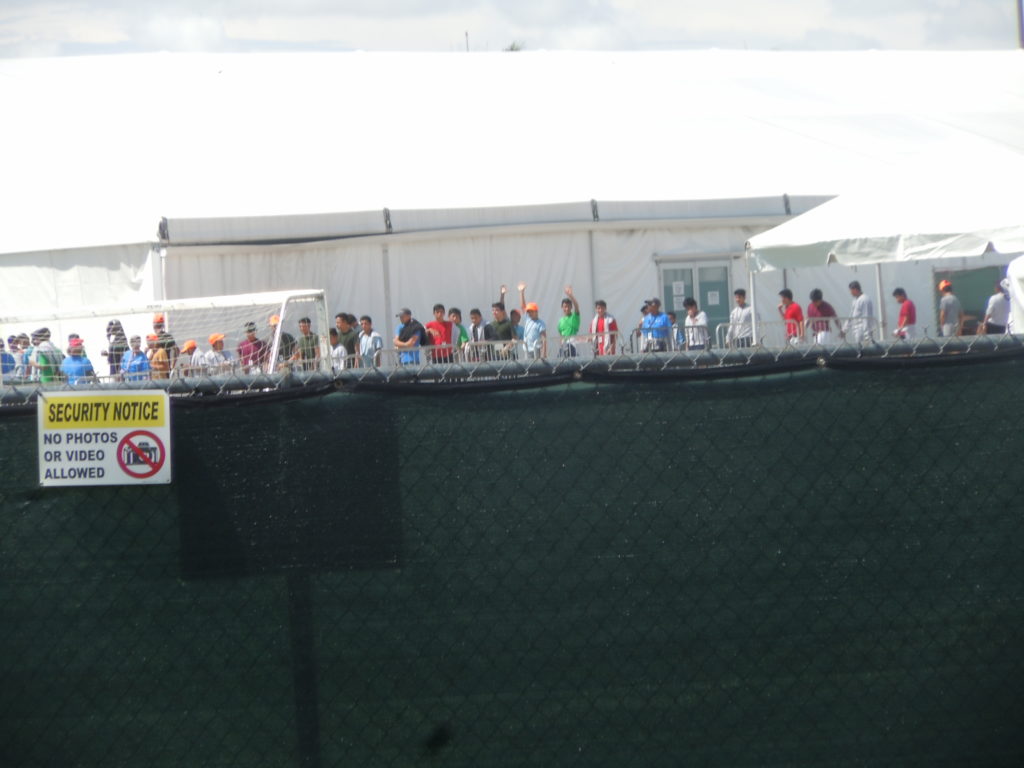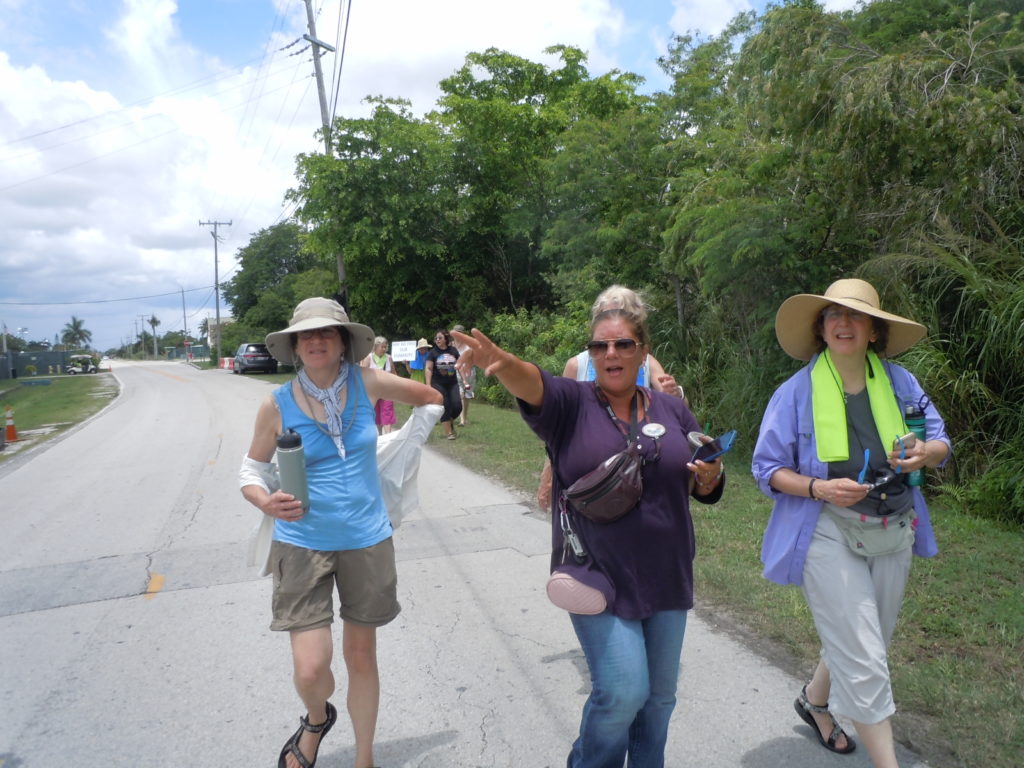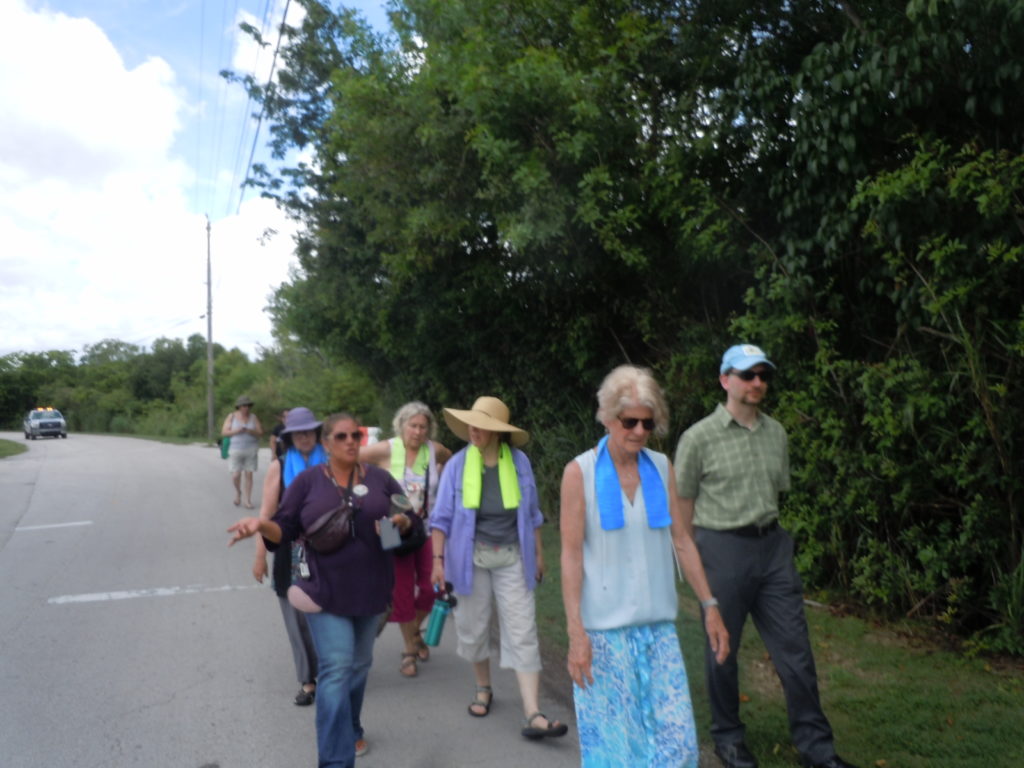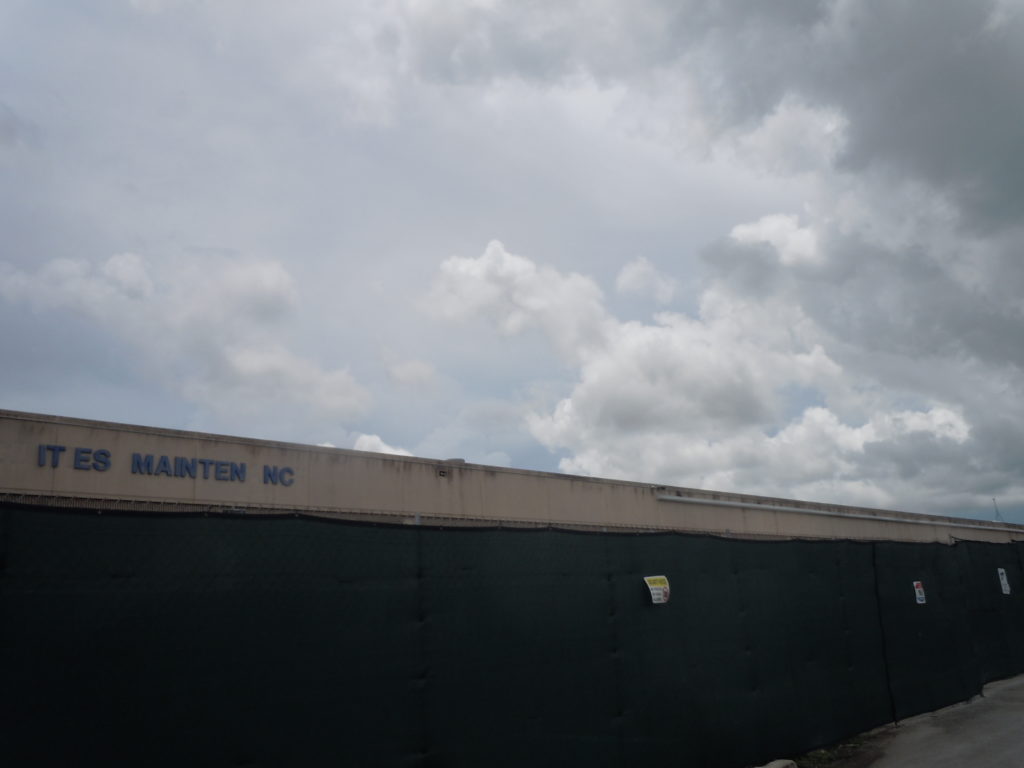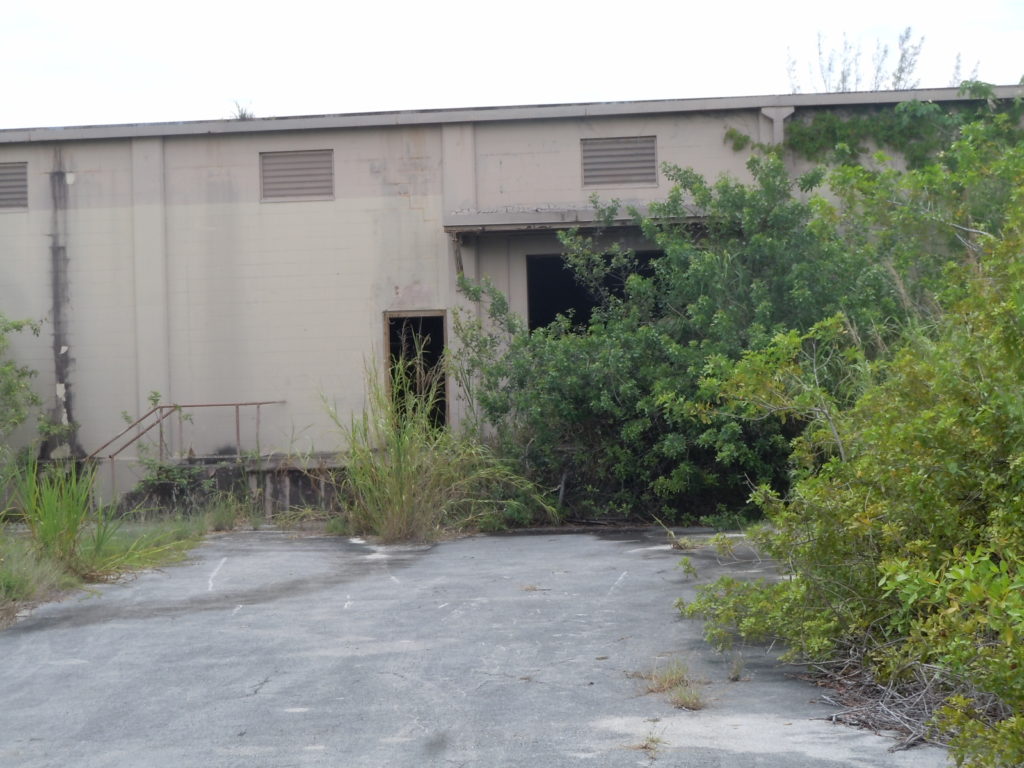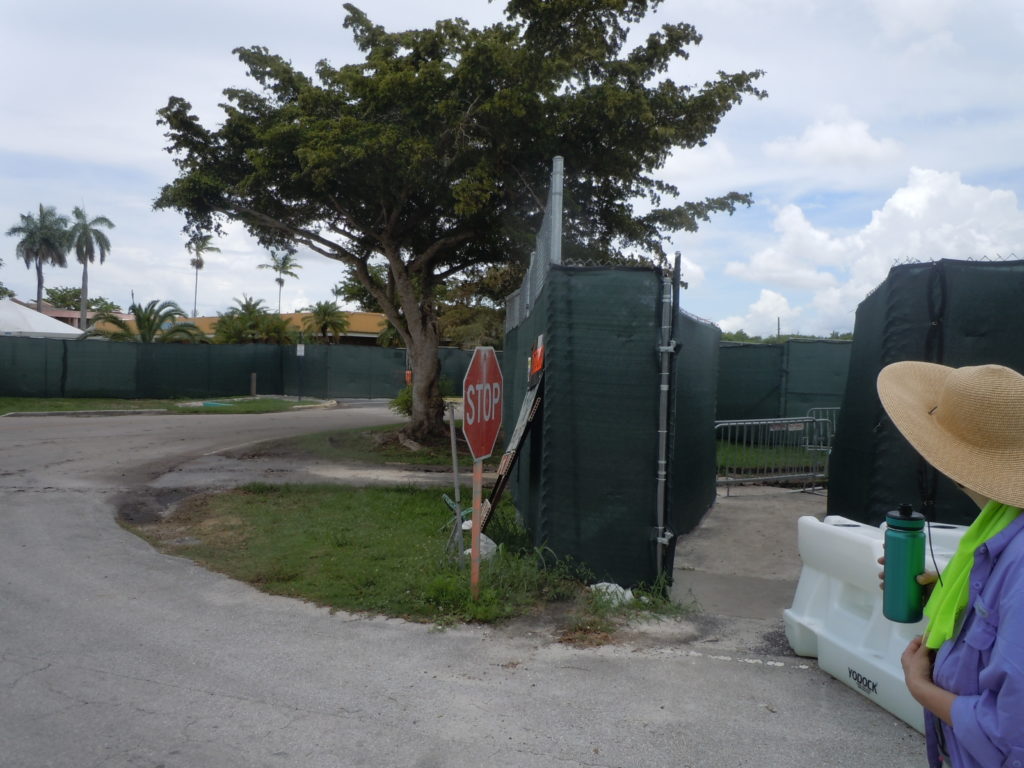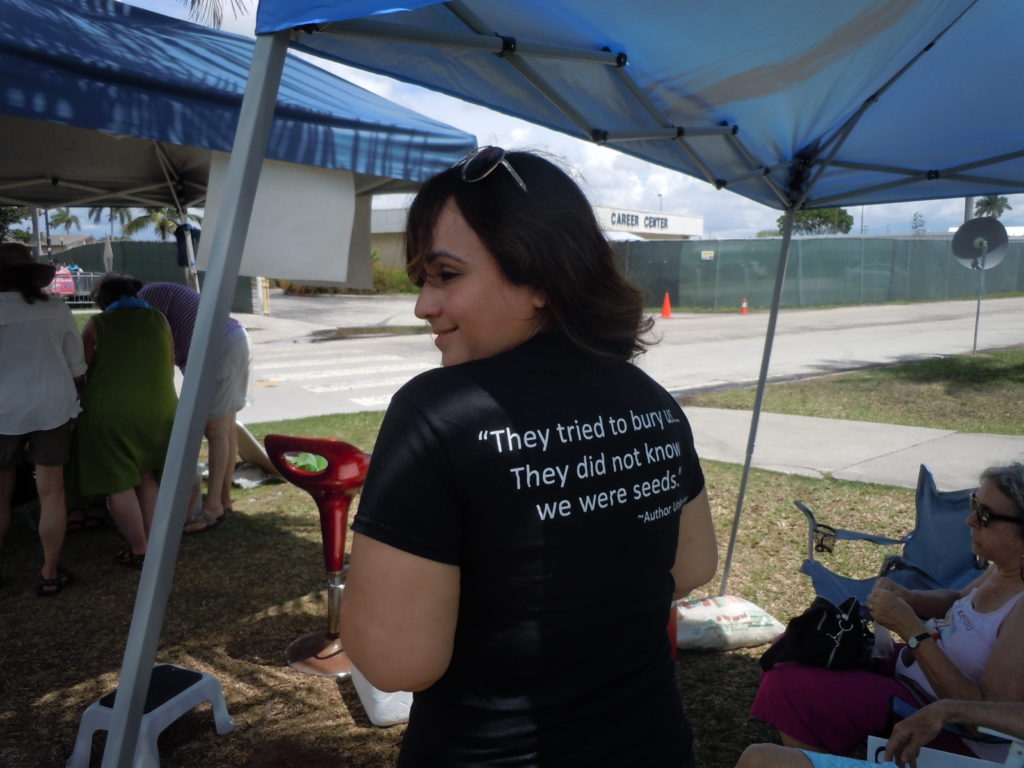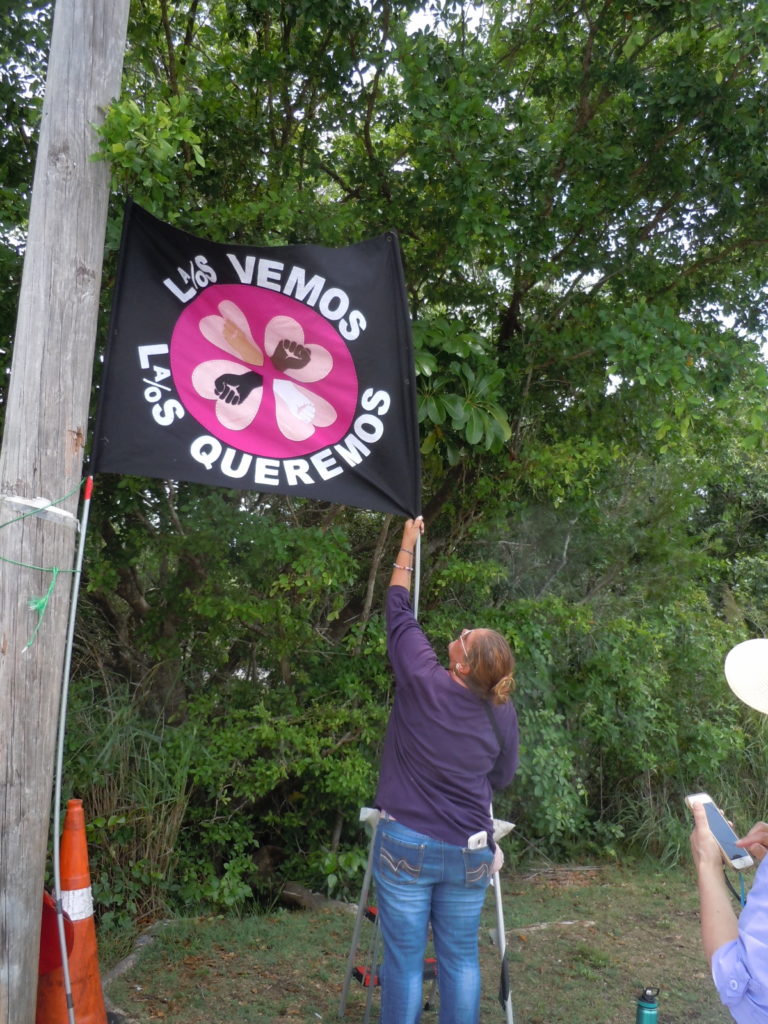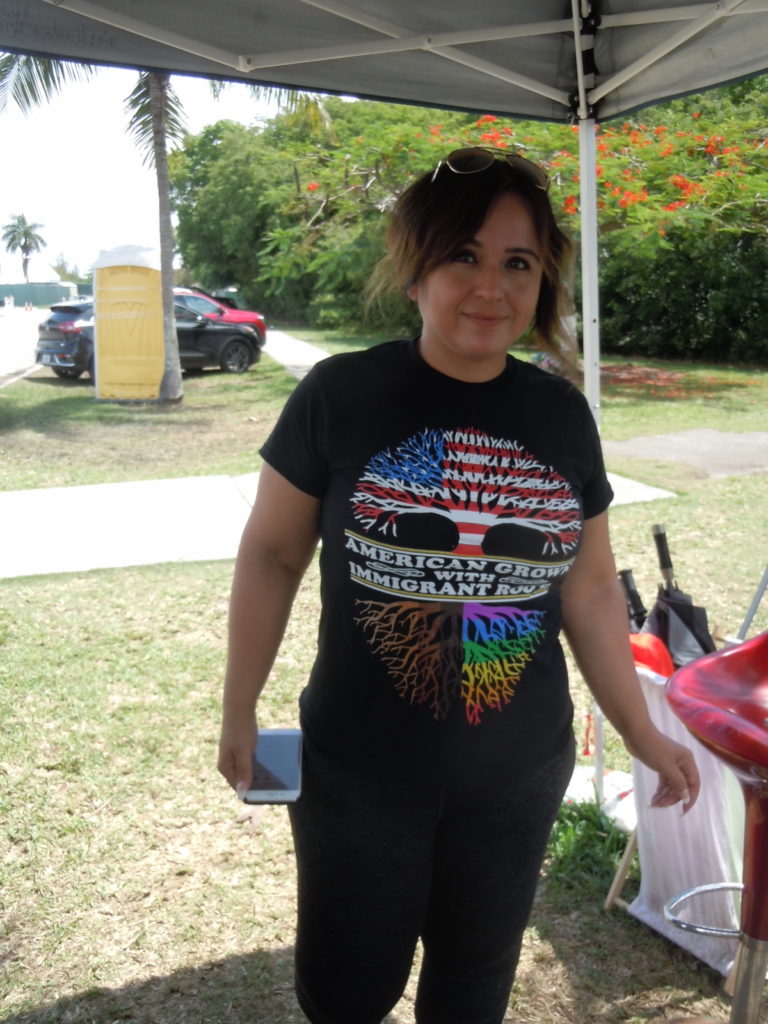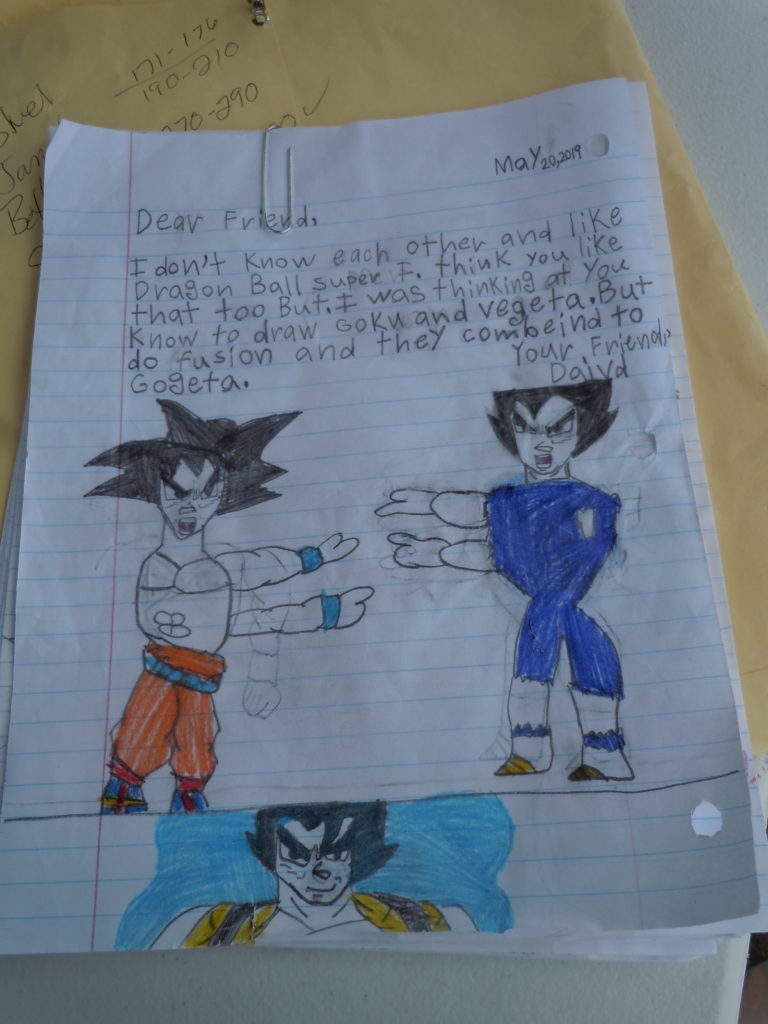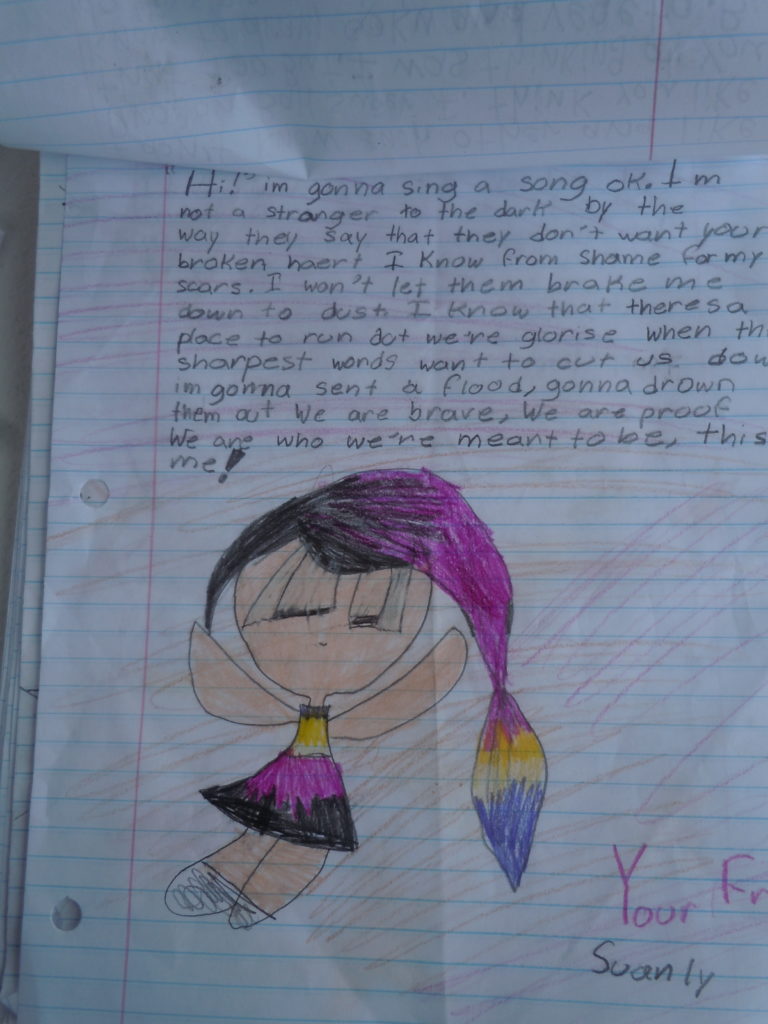125 days of social activists maintaining a presence outside the massive Homestead Detention Center, where somewhere between 2000 and 4000 migrant teens are held. Our second day bearing witness. The shutdown campaign’s slogan is “Homes Instead,” an apt pun on the town’s name.
When any group of kids are outside for their brief periods of recreation, the witnesses try to have a presence on the ladders, where we can see the detainees and they can see us. We sing and chant to them.
For me, that is the main reason we are here: to give them the comfort of knowing they are not forgotten. I wish I could gather them up and give them all hugs; they are not even allowed to touch each other. In my mind, the virtual hug we can give them from the other side of the fence and the separation of several hundred yards is even more important than shutting down this horrible place that profits on human misery.
When the kids weren’t outside or we needed a break from the heat, we helped at the tent, scanning a few dozen of the thousands of support letters written (and often decorated) by kids around the country, many of them wonderfully moving . DHS has promised to deliver them to the kids. Organizers are of course backing up all the letters, both to ensure they are recorded if they don’t actually make it to the detainees, and also to use in press interviews and outreach efforts.
The detention center staff numbers about 3000, the vast majority young people of color. In Homestead, a depressed agricultural community still struggling to recover from 1995’s Hurricane Andrew, jobs at this prison (let’s call it what it really is) pay better and offer stability–and for most, a respite form the temperamental Florida weather (some are outside on security details, etc.) And our little affinity group knows that any path to ending this facility has to include mitigating the economic impact of ending these soul-killing but family-feeding jobs. Many of the buildings in and around the facility grounds are still abandoned and deteriorating since the hurricane almost a quarter-century ago.
The most depressing area houses (or should I say warehouses) the 17-year-olds. While those below 17 have windows in their dorms and share their rooms with only 8-12 people, these kids are kept in windowless barracks with 144 beds to a room. The younger ones are blocked from view by a single wire fence covered with mesh, while the older ones are behind a double layer of metal and mesh, with several additional feet of height recently added. It would take much taller ladders to be seen on the other side.
When they reach 18, they’re shackled and shipped out to adult detention centers. Some birthday present!
Apparently, many of these kids have sponsors waiting for them—but they don’t make it easy for families to reunite. Because this is considered an “emergency influx facility,” it is exempt from the Flores rules that mandate children be released within 20 days. Some have been here for months. And Caliburn, the private company that runs this prison for kids who have committed no crime other than arriving at our border to seek asylum, receives $775 per child per day of our tax money (several times as much as it would cost if a government agency were running it). People who’ve done the math estimate the company is raking in a million bucks every two days. So they have no incentive to process sponsorships and discharge their captives.
There’s also the other side of the equation. Not all the sponsors (usually relatives) are here legally. Because there’s been a history of coordinating with ICE, many sponsors are afraid to come forward because they themselves risk being arrested, incarcerated, and eventually deported.
A security detail followed us in a pickup truck as Charlie led us around the complex, and as we approached each gate, guards would casually close the gates so we couldn’t see much as we passed.
Whatever happened to “Give me your tired, your poor, your huddled masses yearning to breathe free”?
Pictures from Day 2.
